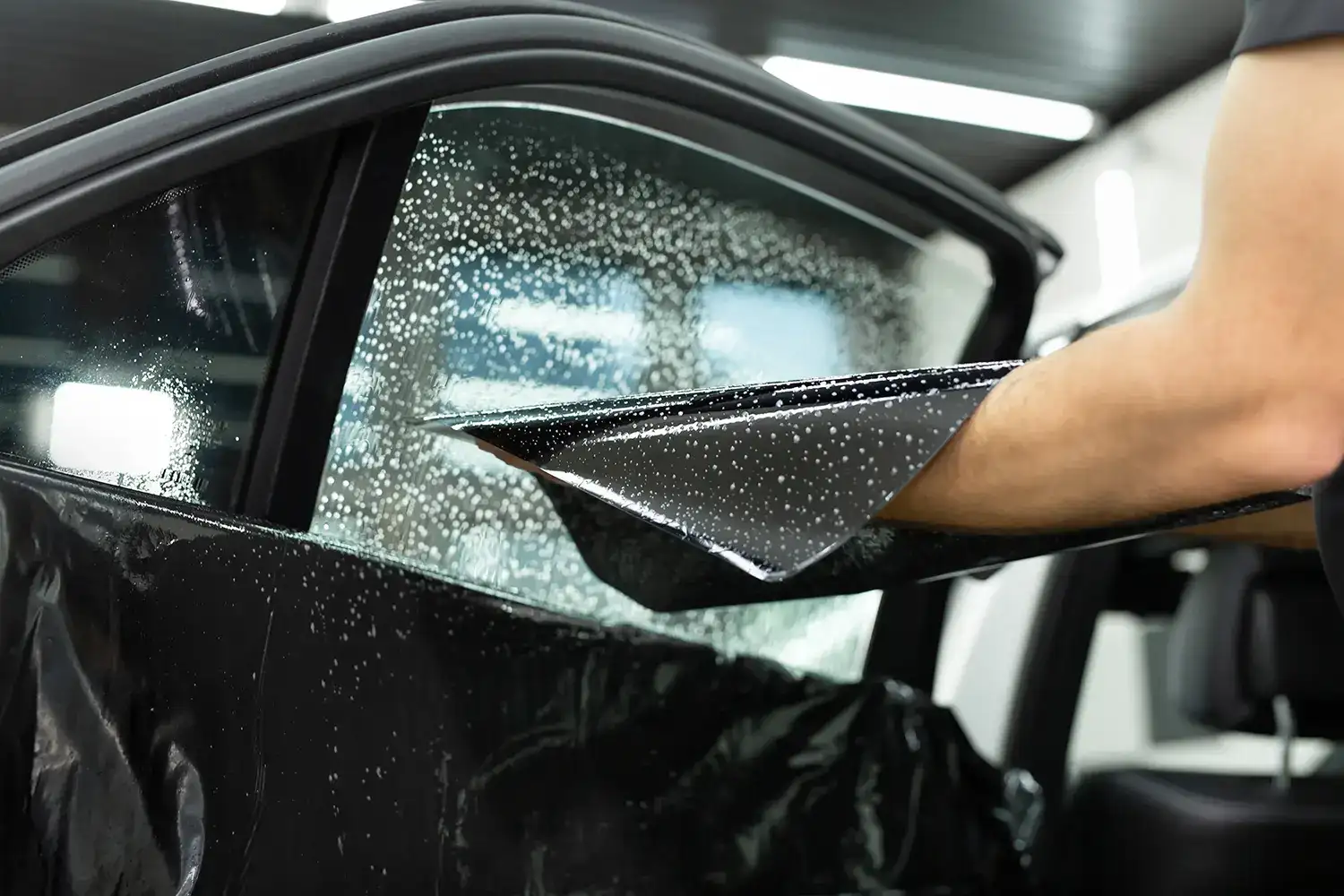The Refine of Specialist Home Window Tinting Explained
Recognizing the procedure of professional window tinting needs a recognition for the details associated with making sure both aesthetic appeal and useful excellence. From selecting the right film kind to the precise preparation of home windows, each step plays a critical role in achieving a perfect application. Adhering to these first prep work, the mindful cutting and application of the film demand accuracy to stay clear of flaws. The last examination and guidance on maintenance remain extremely important for lasting fulfillment. What factors add to the overall performance of the tinting procedure, and just how can they affect both looks and performance?
Picking the Right Window Film
Picking the right window movie involves recognizing different elements that influence both aesthetic charm and functionality. The initial factor to consider is the kind of film, which can range from colored, metalized, to ceramic films. Dyed movies largely supply personal privacy and visual improvement, while metalized movies mirror warm and UV rays, boosting power efficiency. Ceramic films, although usually extra expensive, offer exceptional efficiency without jeopardizing exposure.
Next, think about the film's Visible Light Transmission (VLT) percent, which figures out just how much light enters the room. A lower VLT provides higher privacy and heat being rejected but might lower natural light dramatically. In addition, the film's solar warm gain coefficient (SHGC) is critical; a lower SHGC suggests better thermal performance, aiding to keep indoor comfort.

Preparing the Windows
As soon as the appropriate window film has been picked, the next action is extensively preparing the windows for installment. This prep work is critical for achieving ideal adhesion and guaranteeing a perfect look post-installation.
The initial job entails cleansing the windows thoroughly (window tinting). A top quality glass cleanser is important, preferably one that is ammonia-free to stay clear of destructive any home window seals or tint materials. Making use of a lint-free fabric or paper towels, service technicians should remove any kind of dirt, dust, or oil, paying special interest to the sides and edges where particles typically gathers

Reducing the Movie
An accurate approach to cutting the film is crucial for ensuring a perfect fit on the ready home windows. This step calls for both skill and focus to detail, as errors can lead to undesirable gaps or overlaps that concession the aesthetic and practical qualities of the color.
Before reducing, the specialist need to gauge the window measurements properly, accounting for any kind of unique shapes or shapes. It is a good idea to use high-quality home window film, as this material often tends to be more forgiving throughout the cutting process. The film is commonly laid click this flat on a clean, smooth surface, and a sharp utility blade is employed to guarantee clean edges.
To accomplish ideal results, numerous experts use themes created from previous installations or utilize software program to make exact patterns. A common technique involves including an added margin to the layout, permitting for changes throughout the application stage.
Additionally, reducing the film in a controlled setting lessens the danger of contaminants affecting the adhesive side. By sticking to these careful methods, home window tinting experts can make sure that the film not just fits seamlessly yet also executes successfully over time, boosting both look and capability.
Applying the Tint
After diligently reducing the movie to the right measurements, the following action includes applying the tint to the window surface area. This procedure begins with making sure that the window is tidy and devoid of any type of dust, debris, or deposits that can affect adhesion. A customized cleansing option is commonly used, complied with by complete drying with a lint-free cloth.
As soon as visit homepage the surface is prepared, the installer will thoroughly place the tint film versus the glass. It is important to straighten the film precisely to prevent misplacement, as any errors can cause a less than professional look. To facilitate this, the installer might make use of a light mist of application remedy on the glue side of the movie, enabling minor rearranging if required.
Making use of a squeegee, the installer will then start to press the film onto the glass, working from the center in an outward direction to get rid of air bubbles and guarantee a company bond. This method is essential, as it ensures a smooth and flawless surface. Throughout the application, focus to detail is crucial to protect against creases or blemishes, ensuring that the tint not only boosts visual appeals but also provides the desired performance.
Final Evaluation and Care
The last examination is a critical action in the window tinting process, ensuring that the installation meets both aesthetic and practical criteria. Throughout this phase, specialists meticulously analyze the set up tint for any blemishes, such as bubbles, creases, or misalignments. A complete analysis also includes checking the adherence of the movie to the glass, in addition to its harmony and total appearance.
After the evaluation, appropriate care and maintenance directions are given to the client. It is vital to notify them regarding the suggested timeline for cleaning up the tinted windows, normally advising a delay of a minimum of 30 days after installation to permit the glue to heal fully. Customers must be informed on appropriate cleaning products and strategies, stressing the avoidance of ammonia-based cleaners that can damage the color.
In addition, specialists must encourage clients on the value of normal maintenance to prolong the life of the color. This includes periodic look for indications of wear or damages and responding promptly to any kind of issues. By ensuring a thorough final assessment and offering clear care guidelines, home window tinting professionals boost consumer fulfillment and the longevity of their job.
Verdict
The expert home window link tinting process incorporates a number of crucial actions that make certain high-grade outcomes. Picking the suitable movie type, preparing the home windows thoroughly, accurately reducing the film, and applying it with precision are vital for attaining a flawless surface. A thorough last evaluation warranties that all standards are satisfied, while correct post-installation care is crucial for keeping the tint's long life and performance. Adhering to these treatments ultimately enhances both the aesthetic charm and functionality of the colored home windows.
Comments on “Why Window Tinting is Necessary for Shielding Your Auto's Inside”